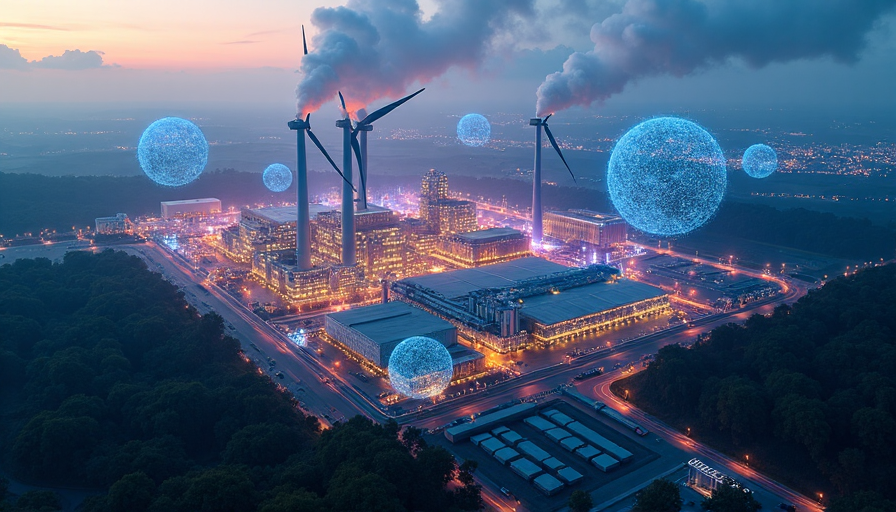
Powering the AI Revolution: How Natural Gas Fuels Next-Gen Data Centers
The Energy Demand Surge
As artificial intelligence transforms industries across the United States, a dramatic surge in energy demand is reshaping the power landscape. Advanced digital infrastructures, particularly data centers, now require reliable and scalable solutions to support innovations that are fueling a competitive race against global rivals. Recent studies, including one by the International Energy Agency, predict the need for over 1,000 terawatt hours by 2035—a staggering figure that calls for immediate, practical solutions.
Natural Gas: The Short-Term Champion
Given the current climate, natural gas has emerged as the go-to energy source for powering AI applications. Unlike some intermittent renewable sources, natural gas turbines offer stable, dispatchable power which is critical for data centers. They serve as a robust backup for the grid and can even be integrated “behind the meter” to optimize energy use.
Energy consultants foresee major developments in this area. For example, Enverus projects that nearly eighty new natural gas power plants will add about 46 gigawatts of capacity by 2030—a figure that rivals the entire electrical capacity of some developed nations. Industry pioneers such as Crusoe have already secured 4.5 gigawatts of turbine capacity to support their burgeoning data center operations.
Exploring Alternative Energy Options
While natural gas currently leads the pack, other technologies are simultaneously being evaluated. Small modular reactors (SMRs) present a cleaner alternative but are hindered by lengthy regulatory processes that may delay commercial deployment. Moreover, constructing the extensive transmission infrastructure required for large-scale energy projects often encounters significant permitting delays. Yet studies by institutions like Duke University suggest that the U.S. power grid maintains untapped potential, especially in regions that can modulate energy use during peak times.
The Rising Promise of Geothermal Energy
Amidst these challenges, geothermal energy is experiencing a renaissance. Leveraging techniques from the oil and gas sector, such as directional drilling and fracking, companies like Fervo Energy—in collaboration with tech giants—are revolutionizing geothermal deployment. This shift could soon make geothermal power a geographically flexible and attractive option for future developments.
Streamlining the Natural Gas Strategy
Major energy players such as Chevron and Exxon are spearheading efforts to integrate natural gas into data center operations. Some are even exploring the addition of carbon capture and storage technologies to further enhance the sustainability of their power generation processes.
However, time is of the essence. Leading turbine manufacturers, including GE Vernova, Siemens, and Mitsubishi Heavy Industries, continue to navigate post-pandemic supply chain constraints that could potentially slow down deployment. Delays in securing turbine orders risk forcing data centers to adopt less sustainable emergency measures, such as diesel backup generators—which run contrary to long-term environmental goals.
An ongoing environmental concern is the control of methane emissions. Innovations in monitoring—using satellites and continuous on-site surveillance—have helped reduce methane leakage by up to 80%. Regulatory benchmarks set by states like Colorado further bolster these efforts, ensuring that natural gas remains a competitive and cleaner solution.
Global Implications and Future Prospects
The adoption of natural gas is not only shaping domestic energy policies but also influencing international partnerships. The United States has already made significant strides by exporting cleaner LNG to Europe, effectively replacing high-emission sources. Such moves underscore the global confidence in rigorously tracked and certified natural gas supplies, positioning it as a viable resource for powering AI developments both domestically and abroad.
Conclusion
As digital technologies continue to redefine the modern economy, the energy sector faces the twin imperatives of scaling rapidly and maintaining environmental accountability. In the United States, natural gas turbines currently hold the key to powering next-generation data centers, even as a long-term transition to fully decarbonized grids remains a goal. The strategic convergence of advanced monitoring, regulatory support, and innovative deployment ensures that natural gas will play a pivotal role in powering the AI revolution for the near future.
Note: This publication was rewritten using AI. The content was based on the original source linked above.